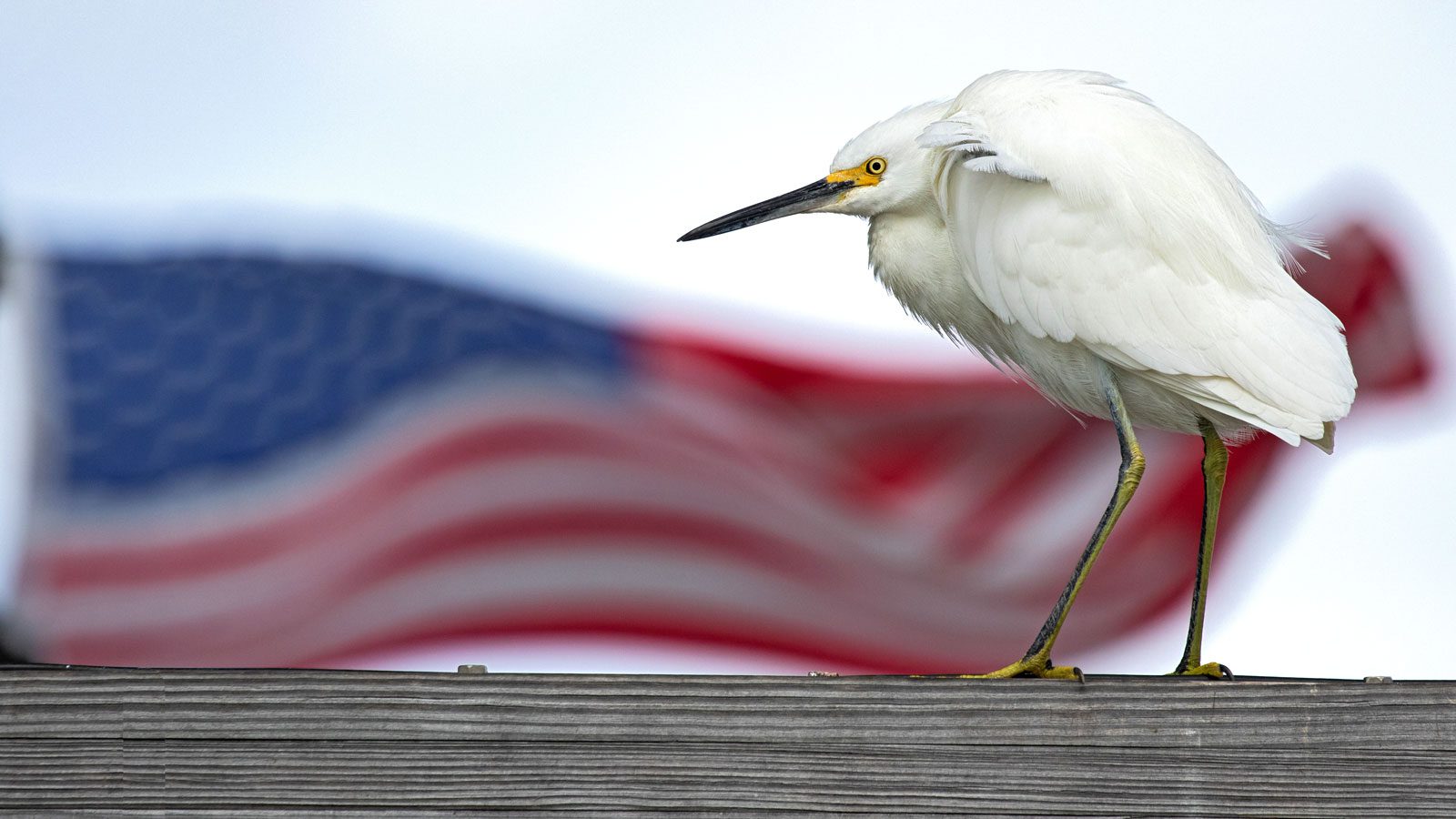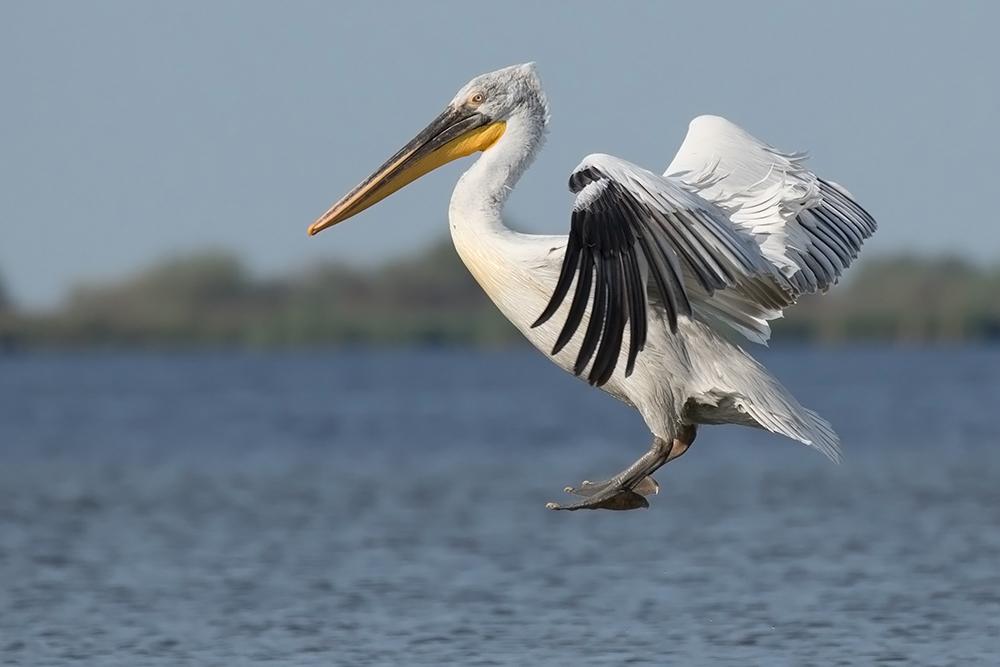From the Autumn 2024 issue of Living Bird magazine. Subscribe now.
I confess. I am an avid birder, a passion originating when I was a young child, and my mother took me into the woods to see Scarlet Tanagers, Rose-breasted Grosbeaks, or wee Yellow Warblers. We had bird feeders bringing titmice and chickadees and nuthatches right to my kitchen window. National Audubon Society posters adorned the kitchen wall so I could learn the birds of southwestern Pennsylvania.
Watching birds for decades, I have witnessed the decline of so many species. Eastern Meadowlarks were common in my youth, trilling their beautiful songs from fenceposts and fields. Today, they have experienced a cumulative decline of around 75% over the past 50 years. Red-headed Woodpeckers regularly showed up in the big tree snags near my house; like the meadowlark, their populations have plummeted. Despite some bright notes, the list of declining birds is long. Altogether more than 300 species in North America are exhibiting population declines, adding up to a cumulative loss of 3 billion birds, according to research published in the journal Science.

Yet these losses may have been worse, were it not for the American legal protections for Snowy Egrets, Wood Ducks, Sandhill Cranes, and many other birds over the last 100 years. Among the most prominent legal protections is the Migratory Bird Treaty Act, signed into law in June 1918. The MBTA made it “unlawful to hunt, take, capture, kill, attempt to take, capture or kill … by any means whatever [my emphasis] … any migratory bird … unless and except if permitted by regulations.” Today the act protects more than 1,000 species identified as migratory birds by the U.S. Fish and Wildlife Service. Though many species have declined, the MBTA has been essential for preventing the decimation or even extinction of many birds.
The hero who led the Migratory Bird Treaty Act towards passage was Senator George P. McLean, a Republican elected from Connecticut to the U.S. Senate in 1911. The saga of enacting into law an international treaty to protect birds during turbulent times—World War I and the Spanish Flu pandemic—is instructive for American conservationists in present times, both for what it takes to achieve such monumental conservation policy and for the sustained integrity of the MBTA.
In the recently published book A Connecticut Yankee Goes to Washington: Senator George P. McLean, Birdman of the Senate, author Will McLean Greeley recounts the long political career of his great-great uncle from the statehouse to the governorship in Connecticut, to his eventual election to the U.S. Senate. It is a story about the complex machinations of politics, including episodes eerily familiar to current political dynamics that display deep divides, intense rivalries, even hotly disputed elections. Within this contentious context in the early 20th century, Sen. McLean put bird conservation at the forefront of his efforts.
Until the Birds of America Are Saved
McLean’s very first speech in the U.S. Senate focused on bird conservation. We must, McLean intoned, “use every effort to secure the support of the public until the birds of America are saved.”
The threats to birds at the turn of the 20th century were acute. Legendary wildlife conservationist William Hornaday called the period from 1870 to 1900 a “period of extermination.” Some observers at the time estimated losses of 200 million birds annually from the ornamental hat trade. And McLean, himself a hunter (though he eventually ceased duck hunting), had witnessed dramatic declines in duck populations.
These declines in bird populations aroused passions both of a budding assembly of conservationists, often led by women, and what Will McLean Greeley refers to as a “power elite” that included the likes of Teddy Roosevelt, who “gave legitimacy to and helped orchestrate the conservation movement in the early 1900s.”
Yet these early bird-conservation efforts were not straightforward. For some politicians and critics, a plea for national action sparked bedrock states’ rights debates. States had long had dominion over wildlife, including birds. The federal Lacey Act of 1900 centered only on prohibiting interstate shipment of birds and mammals in violation of state laws. Thus, as Greeley recounts, McLean’s push for a more comprehensive national approach was unprecedented—and controversial. Sen. McClean artfully invoked “general welfare” provisions of the U.S. Constitution and argued that individual state action alone was ineffective given the wide movement of birds as they migrate across landscapes, waters, and even international boundaries. But he faced significant headwinds.


McClean’s initial focus was on curtailing “excessive” game hunting. But the National Audubon Society and others proposed that he broaden the effort to include songbirds and insect-eating birds. This broadened focus was more than a matter of the heart. It laid the foundations for building out a much broader constituency of support and message appeal. Appealing to public sentiment, McLean called birds “one of the most beautiful and useful natural blessings.” Inclusion of insect-eating birds gave McLean political leverage on two important fronts—first, with the powerful agricultural community, using arguments that birds protected agriculture against an estimated $800 million ($17 billion in 2024 dollars) in annual losses from insects; and second, as a national security measure to advance food security as World War I unfolded.
The history of the MBTA’s passage offers insights into both the ingredients and challenges of advancing conservation through federal legislation. McLean was a master at building broad alliances—in this case, with conservationists, hunters, farmers, business leaders, and even advocates of national security. He assembled these alliances by building narratives around multiple benefits that encompassed economics, recreation, food security, rural livelihoods, and nature itself. Together, these different values and interests overcame arguments of states’ rights, opposition by some hunters, and anti-regulatory sentiments.
From a kernel of an idea to enactment, the Migratory Bird Treaty Act reached President Woodrow Wilson’s desk for his signature in seven years—in some ways, a relatively short timeframe for major federal legislation. Along the way, Greeley reports that McClean needed to find ways for the MBTA to withstand court scrutiny, as it pushed federal action and the notion of general welfare beyond previously understood boundaries. Packaging the proposed law in a treaty, McLean thought, could help the MBTA withstand constitutional scrutiny, as it would put the purposes of the envisioned act well within the Constitutional Supremacy Clause that gives authority to the federal government for treaties. In 1916, the United States made a treaty on migratory birds with Canada via Great Britain, which set the stage for the eventual passage in 1918 of the Migratory Bird Treaty Act. Later migratory bird treaties were made with Mexico, Japan, and Russia.
Amid Deep Political Divides, A Near-Unanimous Vote
One hundred years later, this model of conservation legislation that appeals to broad interests helped pave the path to reauthorization of the Land and Water Conservation Fund. Even amid the deep divides in Washington in 2019, the vote in the Senate was near-unanimous as LWCF champions appealed to hunters, anglers, conservationists, local economies that benefit from outdoor recreation, advocates of coastal flood protection, and a suite of other interest who saw benefits from the fund’s $900 million annual contributions to conservation.

But LWCF was about spending, including allocation of funds to states for outdoor recreation, while the MBTA is centered on prohibiting certain activities unless permitted through regulations by the federal government. Its regulatory dimension has made the act vulnerable to forces of deregulation and to certain business interests that sometimes chafe at permitting processes and requirements to protect birds. This vulnerability surfaced starkly in 2017 when the Trump Administration strived to fundamentally rewrite at least 50 years of interpretation of the MBTA.
Every presidential administration from Nixon to Obama had understood that the MBTA required permitting for any “incidental take”—that is, killing or harming of birds as a side effect of other otherwise legal activities such as building wind turbines, operating oil production sites and their associated contaminated waste pits, engaging in fishing practices that sometimes ensnared birds, and more. The Trump Administration issued a legal opinion, subsequently captured in a rule, that eliminated responsibilities of industries and others to avoid incidental take of birds covered by the MBTA.
This legal opinion was no minor matter. In 2018, I joined with former Clinton and Obama Interior Deputy Secretary David Hayes to write a New York Times op-ed about our shared experiences of the importance of the MBTA to bird conservation, and the solid history of implementing the act consistently with its clear and comprehensive language against killing or harming birds. The language of the MBTA motivated conservation in such a way that many companies had stepped forward over the decades to proactively limit impacts to birds from their facilities and operations. The U.S. Fish and Wildlife Service was judicious in its enforcement, working with companies to issue incidental-take permits and collaborating with them to find innovative ways to avoid harms to birds. The USFWS limited its enforcement actions only to significant violations.
The outcry against the Trump Administration’s narrow interpretation of “take” in the MBTA was swift. Environmental law scholar Patrick G. Maroun captured the essence of the criticism in an article entitled More Than Birds: Developing a New Environmental Jurisprudence Through the Migratory Bird Treaty Act that was published in Michigan Law Review: “If the Act’s purpose is to protect migratory birds from existential crises driven by commercial pressures, then construing the Act to apply almost exclusively to hunters simply because hunting was the primary commercial threat to migratory birds at the time of enactment is to betray its essential character.”
In 2020, U.S. District Court Judge Valerie Caproni rejected the Trump Administration’s radical reinterpretation of the MBTA, opening with a dramatic statement and a nod to Harper Lee: “it is not only a sin to kill a mockingbird, it is also a crime.” In a lengthy explanation, the court noted that, had Congress intended only to prohibit the deliberate killing of birds, such as by hunting, it would have been easy for Congress to write such legislation. But, as Judge Caproni wrote, “There is nothing in the text of the MBTA that suggests that in order to fall within its prohibition, activity must be directed specifically at birds. Nor does the statute prohibit only intentionally killing migratory birds. And it certainly does not say that only ‘some’ kills are prohibited.”
Given the published research indicating continued dramatic declines in North America’s bird populations, the Biden Administration revoked the regulation of the previous administration and returned to prohibiting incidental take with enforcement discretion under the MBTA. But the MBTA story is never over. With the recent Supreme Court decision to revoke a 40-year court precedent that gave deference to agencies in how they interpret statutes (the Chevron deference), challenges to the concept of incidental take will likely resurface. MBTA critics may well look for a favorable court to step in as arbiter of the act’s scope.
Thus, as America enters the beginning of another presidential term in early 2025 and seating of the 119th Congress, the tale recounted by Greeley as he describes George McClean’s long political career offers more than a retrospective. It describes both a roadmap for advancing national conservation laws and a cautionary tale of just how vulnerable such efforts can be. If there is a lesson to be learned, it is that durable conservation requires broad, multifaceted support built upon emphasizing many benefits—indeed the foundational importance of nature to all life on earth, as well as to thriving communities and dynamic economies.
About the Author
Lynn Scarlett was the deputy secretary and chief operating officer of the U.S. Department of the Interior under President George W. Bush. She has also served as global chief external affairs officer at The Nature Conservancy and chaired the Science Advisory Board of the National Oceanic and Atmospheric Association, and she is a former administrative board member of the Cornell Lab of Ornithology.



